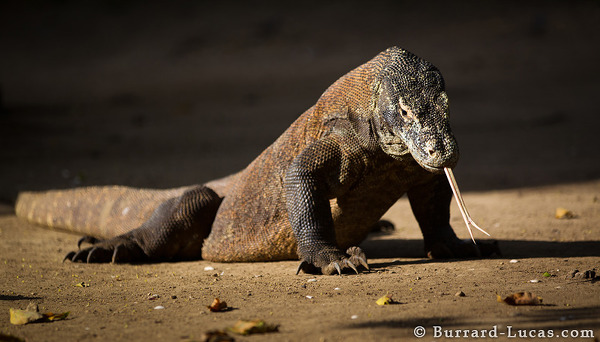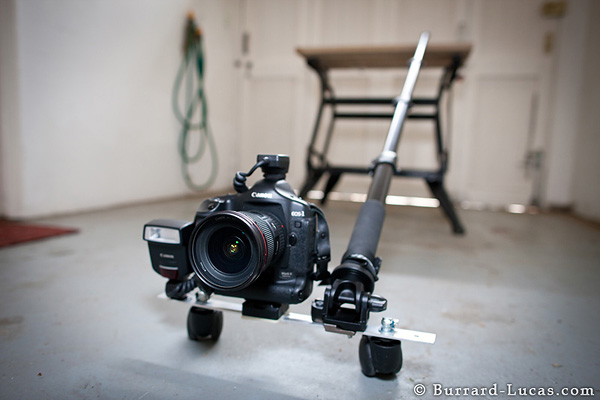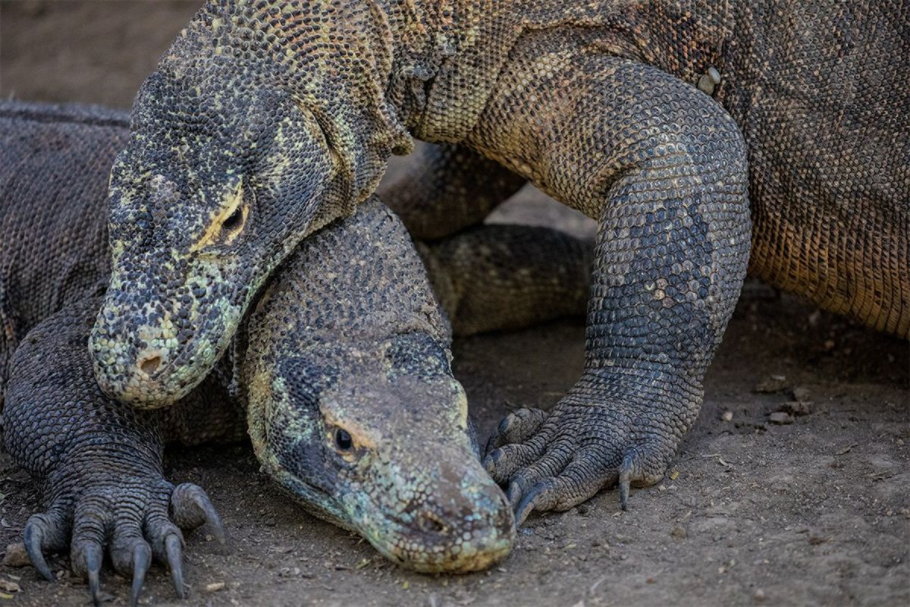
When you plan to go to one of the remotest tropical island to meet one of the prehistoric animals that’s been roaming around since 900,000 years ago, you don’t want to go empty-handed. You will want to go with the best camera for wildlife photography. Not only that, you will also want to come prepared with supporting equipments and technique to get the best photos of the beasts. The Komodo Island is just like real-life Jurassic Park and getting awesome photos of its residence could be a a bit challenging. Especially when these 3m long gigantic lizard is ready to maul you for its lunch. Here are some tips for getting impressive photograph of the Komodo Dragons without losing a limb that that we have gathered from professional photographers across the internet.
Mounting Camera on A Low Two Wheelers in Komodo Island

William Burrard-Lucas, a UK photographer founded a genius design of what he dubbed as “KomodoCam”. It consist of a camera mounted on top of two wheelers and a long monopod to push it around. Not only that this give him more room to work with when approaching the dragons, it also give him better angle for close-up dragon shoot. Just to remind you, every tourists should maintain safe distance from the Komodo Dragons. This opportunistic predator can move very quick and snatch you with their strong limbs in a matter of second. Billiard-Lucas noted that it’s not very safe to use the KomodoCam in Komodo-crowded area and you should wait until you find a solitary dragon in a nice clearing. The low positioning of the camera give it an eye-level view with the dragons which breathe life into the photos!
Lens to Bring

Wide lens is basically a staple for landscape photography and you’ll definitely need it to capture the mesmerising beauty of Padar, Pink Beach, and many more. Zoom lens will be your best friend for capturing the dragons. A commercial photographer Fergus Kennedy relied on Canon EF 100-400mm f/4.5-5.6L IS II USM zoom lens during his trip to Komodo Island. The 100-400mm lens to create close shoot of the dragon from a safe distance.
Image Stabilisation
It’s important to bring a camera with good image stabilisation for wildlife photography. Especially when you are hunting for shoots in shady forest like the one in Komodo Island. In areas with less sunlight, you gonna need low shutter speed settings—but image can be pretty shaky. This is where camera with built in image stabiliser come into help.
Arrange the Komodo Island Trip in the Morning
Like most reptiles, these dragons love to sunbathe in the morning to absorb all the warmth of the sun. Being cold-blooded monster (literally), they need sun light to warm up their body. However, they need to retreat back to the shade once the sun gets too hot later in the day to avoid overheat. That’s why it’s best to prioritise your Komodo Island trip early in the morning when the dragons are out in the open. Many tourists complain that they cannot find the dragons or that most of them lounge lazily in the shade of ranger’s kitchen (not aesthetic for taking pictures), but the truth is that’s just how reptile works.
More Komodo and Travelling Stories:
Komodo Liveaboard: A Journey of Fantastic Animals and Where to Find Them
The Wild and Wondrous, Over the Top Komodo Tours
Get Creative with Angles

Just like photographing wild lions and big cats in the savannah, you have to be extra brave and awfully careful. You might need to lie flat in your belly on the ground to get the perfect low angle shot. This will give you a chance to captivate the true size of the dragon in your photograph, but it would also put you in an easy position to be the dragon’s snack. Be careful and always have a ranger by your side. Another tips: try to tell a story of the Komodo dragon to avoid boring photograph. Explore the forest of Komodo Island deeper to find the dragons hanging in the wild; climbing a bark of a tree, passing a water pool, or surrounded by leaves.
If you are unlucky enough to meet Komodo dragons in the forests and have to settle with those pack of dragons that placidly lounge around the ranger station, get creative. Instead of trying to take impressive individual shoot, try to capture close interactions between the dragons. Put your focus in their head and bodies and try to not show much of the stale background.